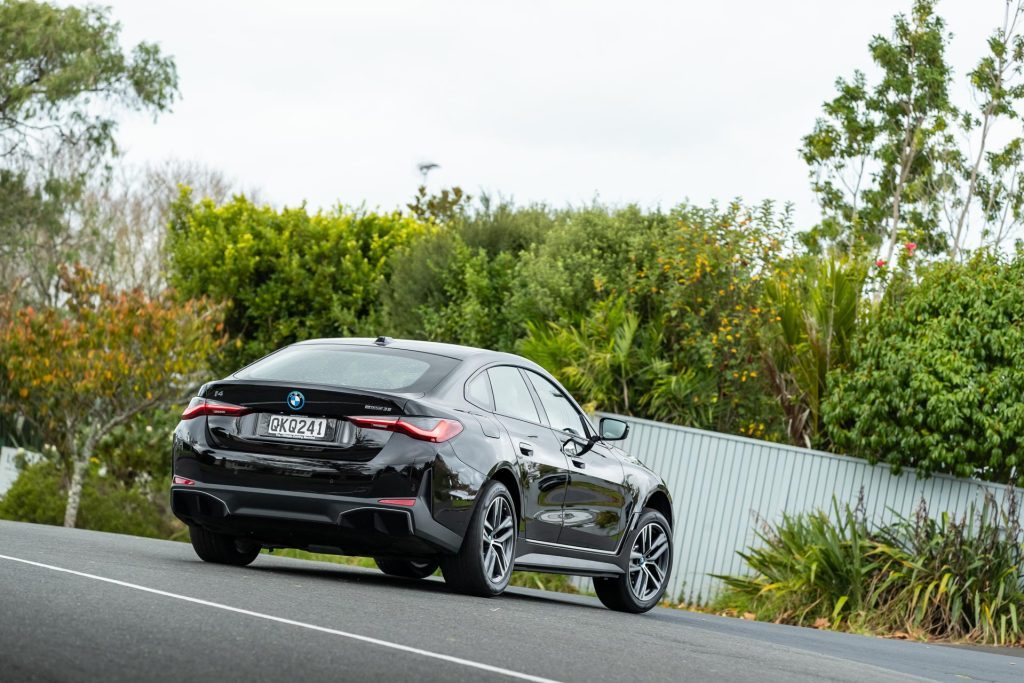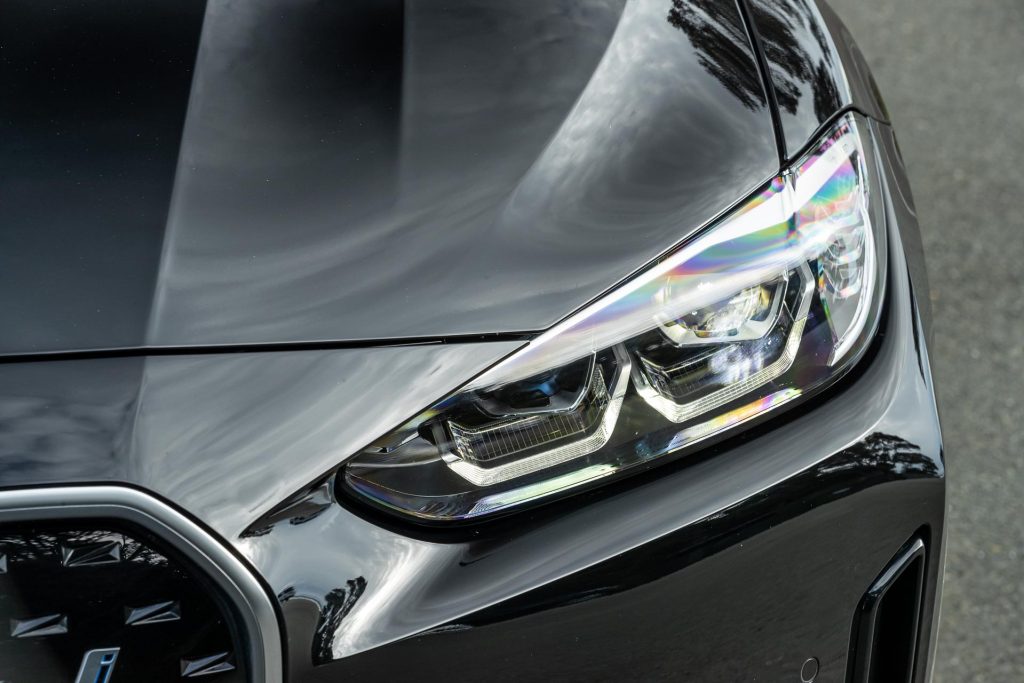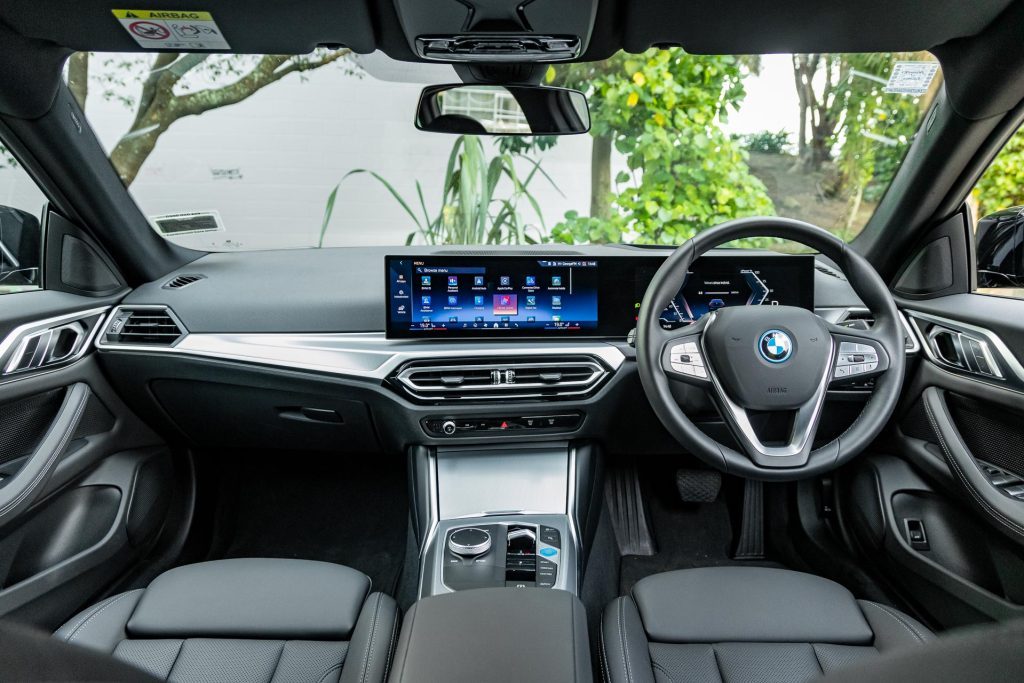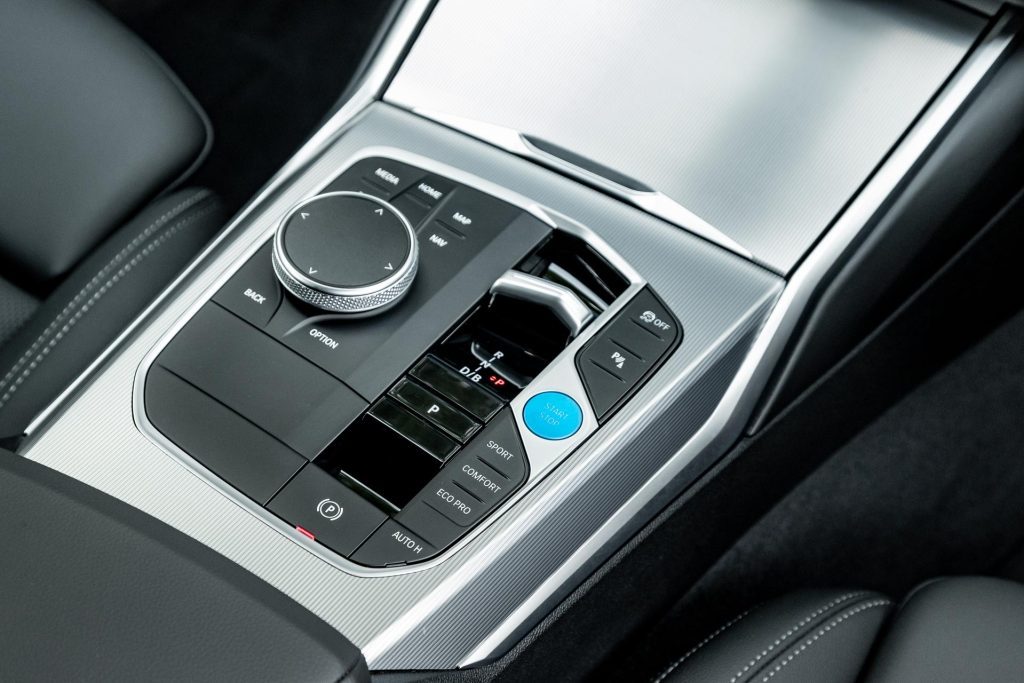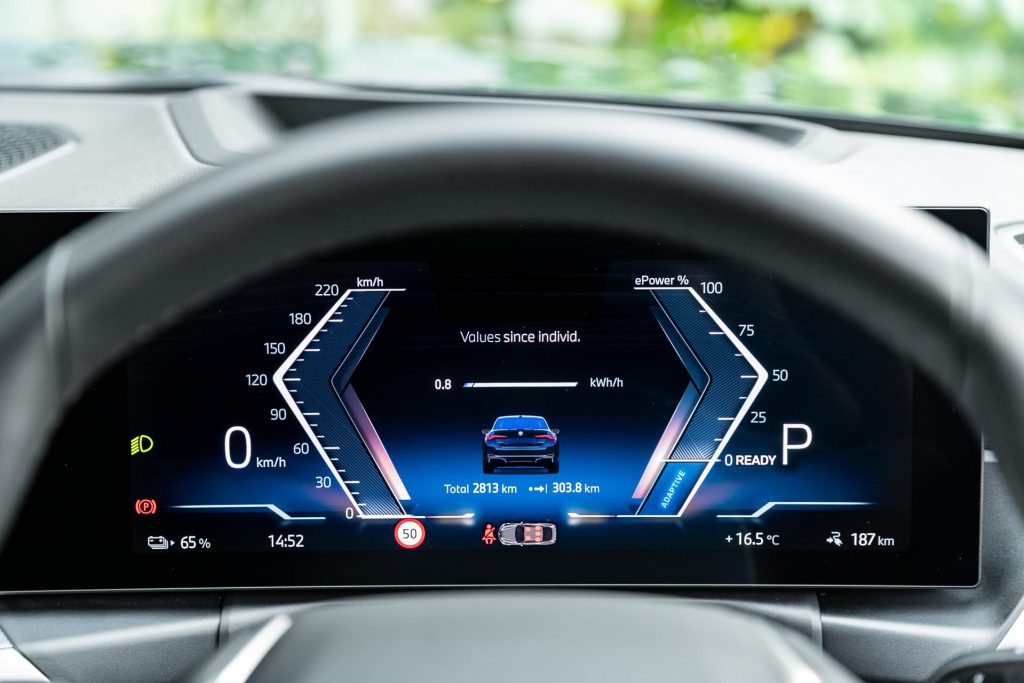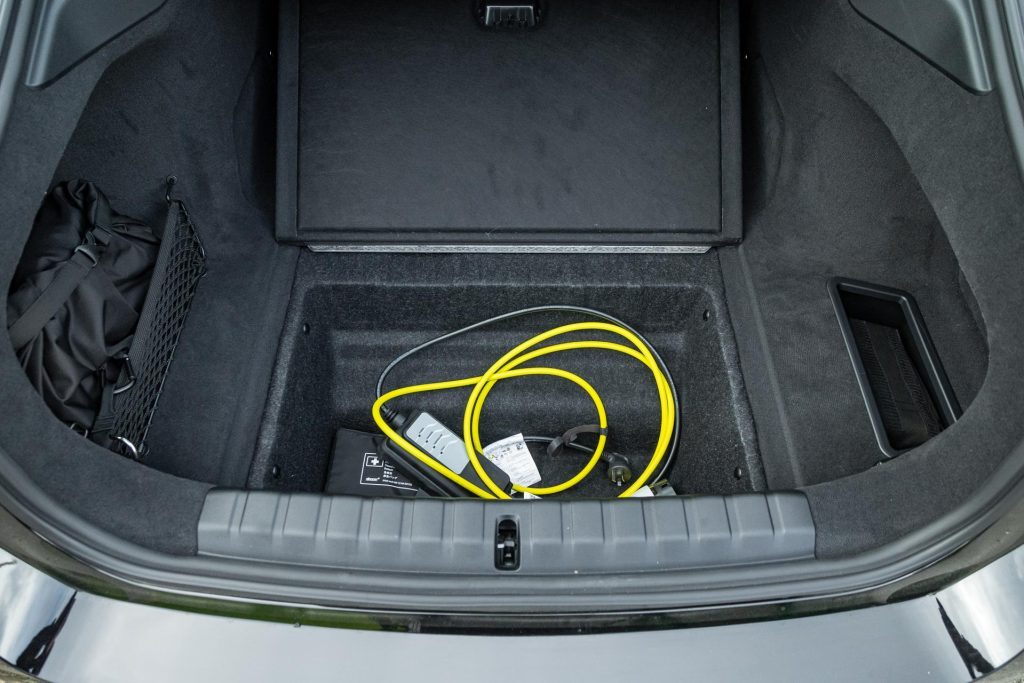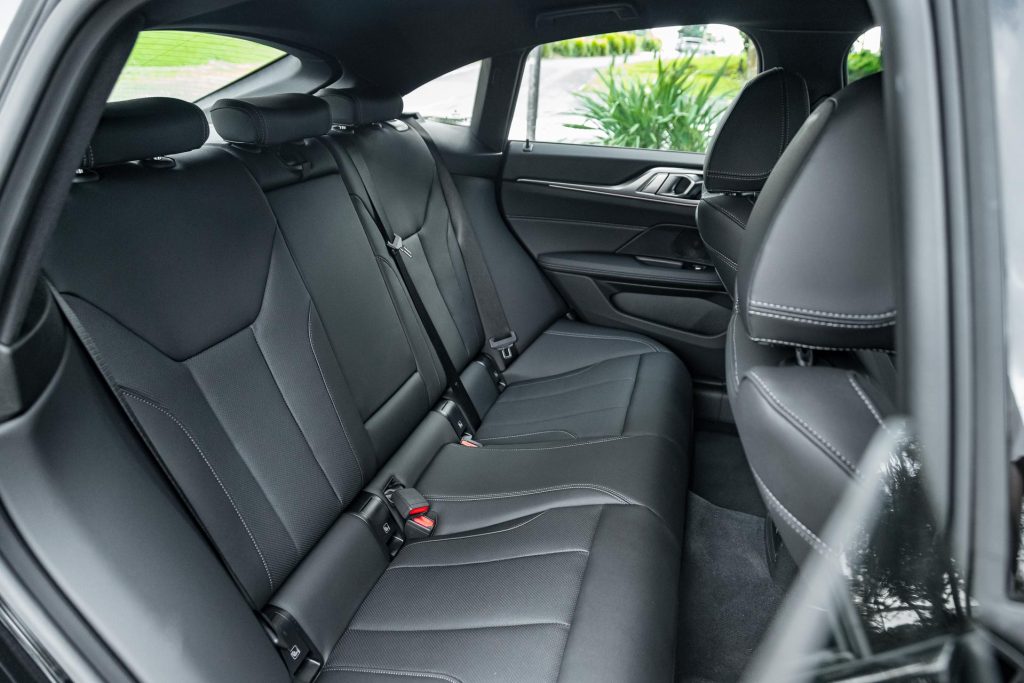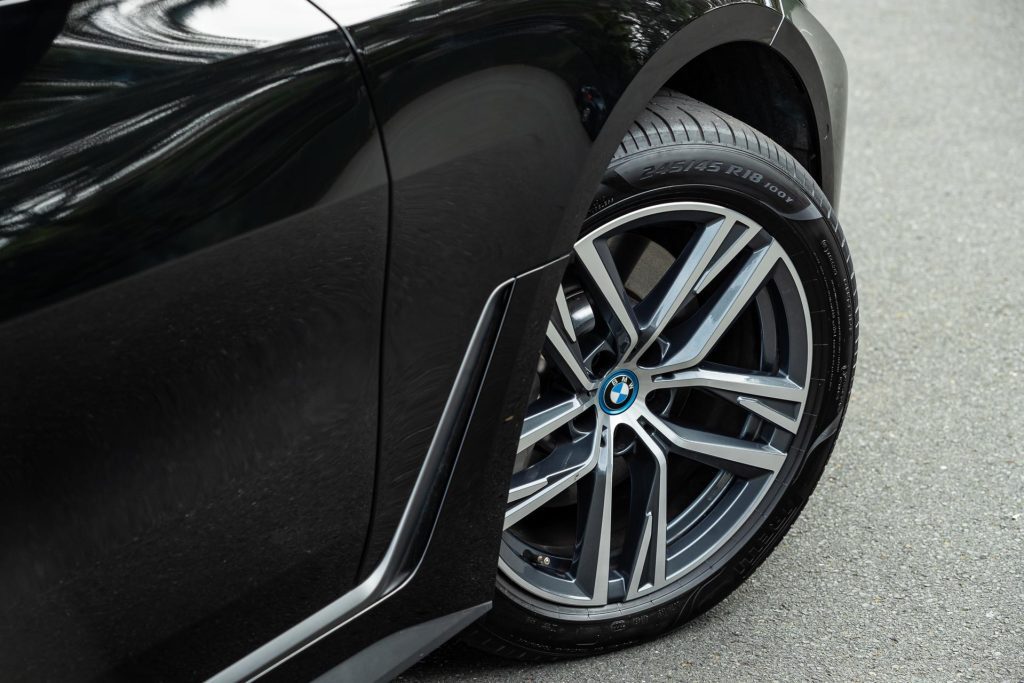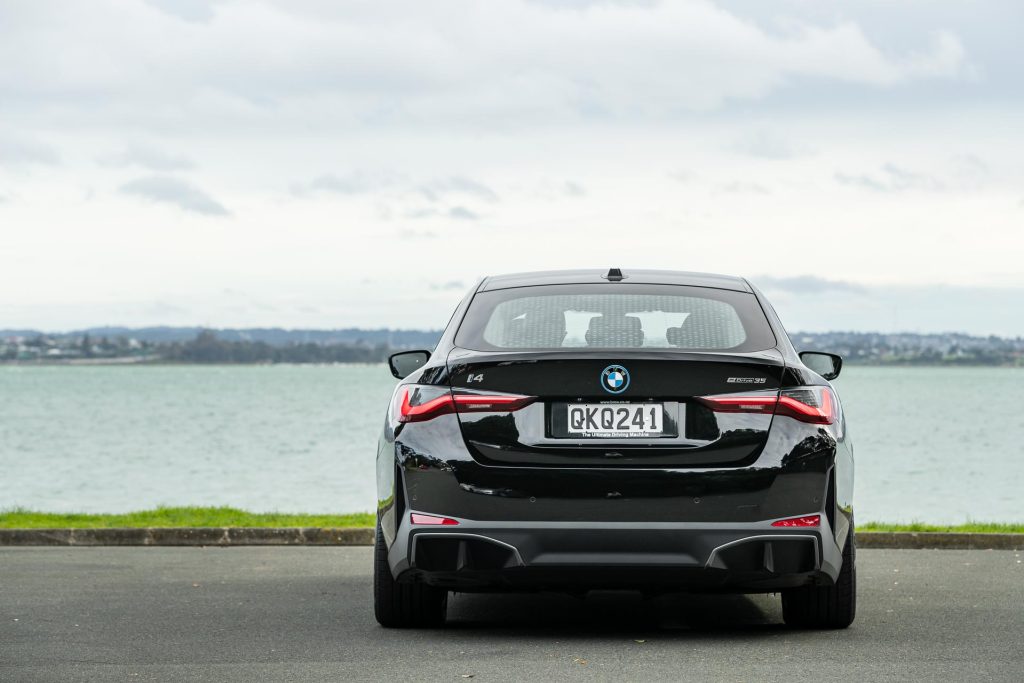2024 BMW i4 eDrive35 review
Generally you’d say no to the base model but in this case the newly added i4 eDrive35 may well be the star of the range.

What’s the most critical aspect of car dynamics? Chassis rigidity? Adaptive damping? Rear wheel steering? None of these, in my opinion.
I’d choose weight split. No matter the weight or height of the vehicle, if there’s an even split of mass between the front and rear axles, then there’s every chance that that vehicle will handle at least respectably.
But what I hadn’t realised was the effect of ballast. As we drive more EVs the effect of a battery pack slung low between the axles becomes readily apparent. Even some of the least expensive electric cars, like the MG4, can rail around corners in quite startling fashion.
What happens then when you get one of the masters of chassis dynamics, with plenty of experience in electrification, producing an executive offering that happens to also be electric?
You get the likes of the BMW i4 M50 which we thought was better buying than the M5 at $137,900 back in 2022. We briefly mentioned at the time that there was also an i4 eDrive40 available for almost $30k less.
Since then the line-up has expanded and now there’s this i4 eDrive35, which retails for $98,900. That’s $16k less than the i4 eDrive40 that we’ve not driven.
If I had to summarise my impressions of the 35, I’d say it is the EV with the best ride and handling set-up I have ever experienced.
It’s not without its faults; room in the back isn’t tremendous, although it’s more the access per se that’s tricky. The reason for this is that it’s built on an ICE platform, not bespoke EV architecture.
And the widescreen infotainment system can be a bit distracting. However, seat heaters and temp adjustment are one touch away and once you get used to it, changing between audio channels is simple enough.
Don’t ask the hired help to do it because she’s AWOL. There is, however, a head-up display. We presume that’s an extra because it doesn’t seem to be on the list of standard equipment.
But the instruments are configurable, and have most of the relevant data is to hand. And there’s adaptive cruise with BMW’s smart adaptive regen. Don’t even think about using the low, medium or high regen settings you’ll find somewhere in touchscreen submenus, eventually.
You don’t need to anyway because there’s a B option to D at the shift lever; just alternate between those. The B invokes max regen and is akin to single-pedal driving.
In Eco Pro mode it coasts in sublime fashion too.
Out of range?
We doubt you’ll ever achieve range of 490km (NEDC) unless perhaps you only drive in town at speeds of 50km/h or less. Even then the WLTP figure of 410km for the 64kWh pack is probably more like it.
But driving like that would be such a real waste in a vehicle like this. At pick up with a full charge it read 390km but we drove mainly on rural roads in which case think closer to 300km of range.
BMW reckons on mean energy use 16 to 19kWh/100km. We saw that easily enough just drifting along – at times it was in the low 16s – but more enthusastic use of the go pedal takes things to 20 or so.
Still pretty decent, given its performance. Having a slick Cd of 0.24 must help inordinately.
Sedan with decent boot opening?
There are a couple of other aspects about this car you should be aware of. At first glance it looks fairly much like a BMW 3 Series, only the rear is more coupe-like so you’re thinking BMW 4 Series, only this has four doors.
So you’re thinking Gran Coupe or some such. I know, it’s easy to become lost in model complexity with some of the German car makers. But all the i4s are four doors.
Think of them as a four-door liftbacks because at the rear is a powered fifth door that lifts up like a regular hatch. Instead of that mean little sedan maw, you get proper access to a decent sized luggage compartment (470-1290L) that also has an underfloor area for your emergency charger.
Only you don’t need that because anyone who buys an electric BMW is gifted a Gen 3 BMW wallbox. And with that you can recharge the 66kWh battery pack overnight.
Other sensible items
A couple of other smart features. It has this natty proximity key that unlocks the vehicle as you approach, relocks it as you walk away. Less natty is a traffic sign recognition system that bongs once if you exceed a certain limit.
I dived into the infotainment screen (nicely angled towards the driver) to cancel this but it still chimed away regardless.
This cruises at highway speeds effortlessly. Honestly, this is more than enough performance unless you just must have that neck snapping acceleration.
You do get a bigger 84kWh battery pack with the other models but that’s just more weight to drag around, innit? As it is, the kerb weight is 2065kg for this, not so as you’d know it to drive.
BMW rates conventional performance, 0-100, as 6sec. But both runs we undertook were under this, with a best of 5.67sec, an overtake needing 3.5sec.
And stopping distances reflect the fact this weighs in the wrong side of 2.0 tonnes at 34.3m. So all good on those fronts.
If you really want more, the M50 delivers respective figures of 3.6 and 2.1sec, and the 100-0 distance is 2m shorter. But the purity of the eDrive35 rear drive dynamics is something else again.
Weight split
Look under the bonnet and all you see is a shroud, not of the Turin variety but plastic. No frunk here. Beneath that is mainly air, and some electrics.
The motor is sited over the rear axle which imbues the car with a 45/55 f/r weight split. That’s midway between a mid-engined car’s 40/60 and an ICE-powered BMW with ‘ideal’ 50/50 split.
We say 45/55 for a rear-drive car is better. For example, there’s one 90-degree reference corner we use a fair bit that’s sighted all the way through.
Only special cars, mid-engined exotics, can round it up cleanly at 100km/h.
The i4 managed that, albeit with a little squealing so it was on the limit, but stayed within its lane. Moreover, it dispensed with a range of other fave corners with utter disdain. For under $100k, we’d say this may be the ultimate driving machine.
It’s not just the weight balance and cornering creds it gets right either. Amazingly this doesn’t have adaptive damping. Suspension is fixed and the ride borders on sumptuous.
That means bumps midcorner can throw it off line on occasion but this is so stuck with its PZero rubber and brilliant weight balance that it just shrugs it off and carries on regardless.
Just imagine how good it will be when BMW gives it a bespoke electric chassis. And the rear seat accommodations will balloon as well. That will be truly something.
Model
BMW i4 eDrive35
Price
$98,600
Motor
210kW, 400Nm
Battery
67kWh
Range
389km
Drivetrain
single-speed auto, RWD
Energy Use
15.8kWh/100km
C02 Output
0g/km
0-100km/h
5.67sec
80-120km/h
3.49sec (100.62m)
100-0km/h
34.32m
Stability systems
ABS, ESP
Safety
AEB, ACC, BSM, LDW,
RCTA, ALK, AHB
Luggage capacity
470-1290L
Tow rating
750kg (1600kg braked)
Service intervals
24 months, 30,000km
Warranty
5yrs, 100,000km
ANCAP rating
4 Stars (2022)
Weight
2065kg (claimed)
This story first appeared in the August 2024 issue of NZ Autocar magazine.
This article was originally published on autocar.co.nz
Also consider
